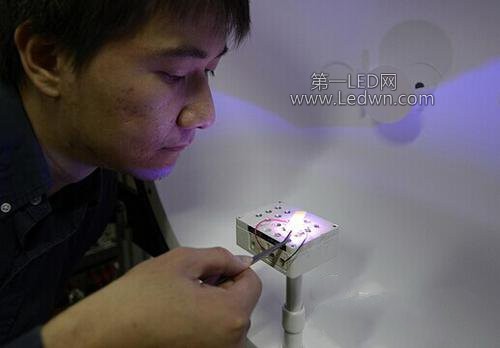National Taiwan University breakthrough efficiency white LED package limit
White LED luminous efficiency due to rising prices continue to decrease, and it proved to be better than the traditional light blue more severe problems, such as under the Ledo, is rapidly applied to daily life. Comprehensive ban incandescent bulbs in favor of energy-efficient LED lights fueled a number of measures, the next few years will become the main indoor and outdoor lighting. Although the LED application progresses, but the luminous efficiency limit has been a question of international, which is closely related with the light color packaging technology, which plays a very important role.
Taiwan''s National Central University assembled a team of solid state lighting specializes in digital color photoelectric hot international experts, after three years of research, this year show a significant research that explore the limits of efficiency white LED package. The papers have been published in November in the "Journal of Solid-State Lighting" in just three weeks in a single month become the highest CTR original papers, also founded the first year of the publication of representative papers, and has in a short time which won two academic awards.

Research team leader, director of the Central University Sun Qingcheng Optical Center, said the study because of the white LED phosphor formulation, packaging and blue chip geometry Jieyou great relevance, high complexity of system integration, thus enabling the international community further research team is rare. For the sake of efficiency package accurately grasp the limits of the research team to develop on its own for many years, with the world''s leading phosphor optical model to simulate and analyze accurate and systematic, while experiments measuring and comparing the six major package structure and found the package structure and effectively with fluorescent powder formulation is an important factor in improving the efficiency of the package.
The research team found that in general the yellow phosphor, the phosphor and encapsulation efficiency optimization package structure upon binding, in theory, up to its limit of about 75%, compared to the general market of white LED products, the packaging efficiency generally falls below 55%, which shows that there is still great room for improvement. The research team without affecting the performance of color, according to the simulation results to adjust the phosphor formulation and packaging geometry measured by actual experiment, get close to 70% of packaging efficiency performance, quite close to the theoretical limit value, has been uncovered literature in leading indicators.
Responsible for color performance photovoltaic system Yang Zongxun professor, said the study in addition to exposing the module encapsulation efficiency beyond the limit, but also to further push the performance white LED luminous efficiency of the system limit. LED luminous efficiency is important to show a high correlation with the degree of color, there are some exaggerated reports of luminous efficiency internationally, some of that is built on the premise of the performance at the expense of color, will not actually used in general lighting. At the same time, better color performance white LED, although the luminous efficiency may be lower, but because of a wider range of applications, the direction of technology is worth the investment.
As a thermal photovoltaic system research professor Zhong De Yuan further said that the research team also found that the phosphor has a unique temperature distribution, is actively obtain accurate temperature field experimental data, will help heat the high-power white LED package structure optimization.
Sun Qingcheng said the research team based on the research results, has developed a new type of package, the possibility of practice with a theoretical limit packaging efficiency, but also capable of high power and high color rendering dual phosphor package show more high encapsulation efficiency and achieve better energy efficiency. This new technology has been patented in Taiwan and the US, there are two listed companies to technology transfer cooperation, while a well-known international companies are applied directly to discuss selling its existing optoelectronic products; students participated in the study, was also domestic firms paying snare outstanding university-industry performance.